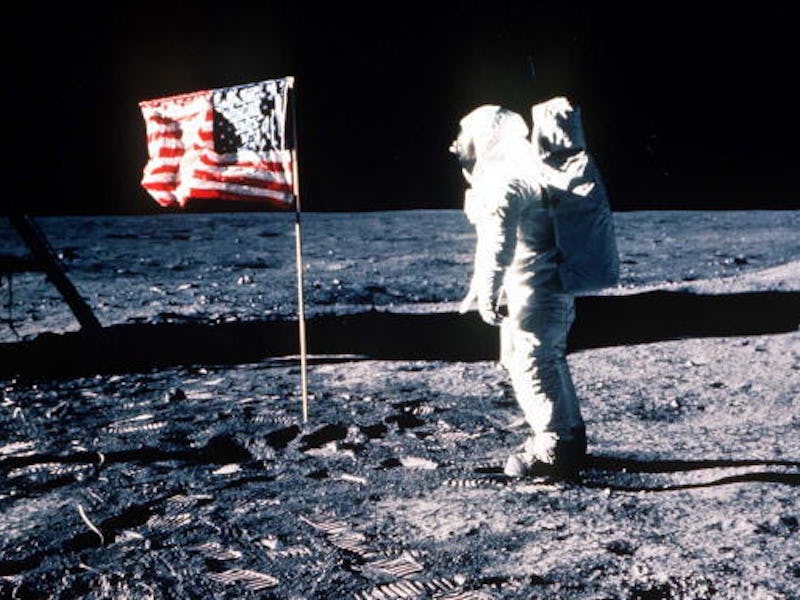If the Moon Landing Were a Hoax, We Would Have Found Out by 1972
An Oxford academic has created an equation to figure out how long conspiracies can stay a secret.

Humanity loves a good conspiracy. It’s easy to dismiss conspiracy theorists as nuts, who claim F.D.R. set up Pearl Harbor and Dick Cheney put 9/11 in motion. But they’re not always wrong — hoaxes and cover-ups do pop up throughout history, as the Tuskegee experiments and Watergate scandal demonstrated. Just because you’re paranoid, the old saw goes, doesn’t mean they’re not out to get you.
But plenty of would-be conspiracies fall apart for the simple fact that people love to blab. If a conspiracy is revealed, how long does it take the news to break? And what does that mean about conspiracies that haven’t yet been blown open?
David Robert Grimes, a physicist and postdoctoral research assistant at Oxford University, has made it his agenda to determine the legitimacy of conspiracies. Grimes developed an equation he believes calculates the probability of a conspiracy being revealed. If you incorporate the right elements, in Grimes’ view, you’ll know when the truth behind a conspiracy breaks out into the open.
"Investigate 9/11" is the slogan of the 9/11 truthers who made the documentary 'Loose Change.'
“It is common to dismiss conspiracy theories and their proponents out of hand but I wanted to take the opposite approach, to see how these conspiracies might be possible,” Grimes said in a news release. “To do that, I looked at the vital requirement for a viable conspiracy — secrecy.”
Grimes’ conspiratorial equation involves the number of conspirators, the length of time a theory has existed, a realistic estimation of the chances of one individual giving it away, and factors in the likelihood of the conspirators dying. The number of conspirators was purposefully over-estimated to create a “best case scenario” for those plotting.
For the mathematical model to work, he placed realistic parameters — the probability of a leak or failure as evidence by conspiracies that proved to be legitimate. He took data from the Edward Snowden NSA/PRISM affair, the Tuskegee syphilis experiment, and the FBI forensic scandal in order to calculate p— an estimation of how certain parameters influence the conspiracy’s failure or success.
NSA whistleblower Edward Snowden released thousands of classified documents.
Based on his model, the major conspiracy theories that live on in chatrooms and subreddits — if they were real — would have been already revealed. Grimes found that it would have taken about three years and eight months for the moon landing hoax to be exposed. A vaccination conspiracy would stay hidden roughly three years and two months. A suppressed cancer cure would come to light within three years and three months.
Then he took if farther by asking how many people need to keep up the charade. Employing the equation, he estimated that for a plot to last five years, the maximum people who could know about it would be 2,521 people. For a conspiracy to last at decade, at most, fewer than 1,000 people can be involved. If you want a conspiracy to last 100 years, only 125 people can be in on the scoop.
“Not everyone who believes in a conspiracy is unreasonable or unthinking,” says Grimes. “I hope that by showing how eye-wateringly unlikely some alleged conspiracies are, some people will reconsider their anti-science beliefs.”
Take rapper B.o.B’s recent mission to spread the truth of a flat Earth, deny the Holocaust, and say NASA is part of the Department of Defense — all theories which have been widely disproved.
But Grimes notes that despite his and other debunker’s efforts, not everyone is convinced by the facts. As much as we’d like to think otherwise, beliefs are ideological instead of rational — and researchers like Grimes hope to get to the root of why people can’t let go of theories punctured by reality.